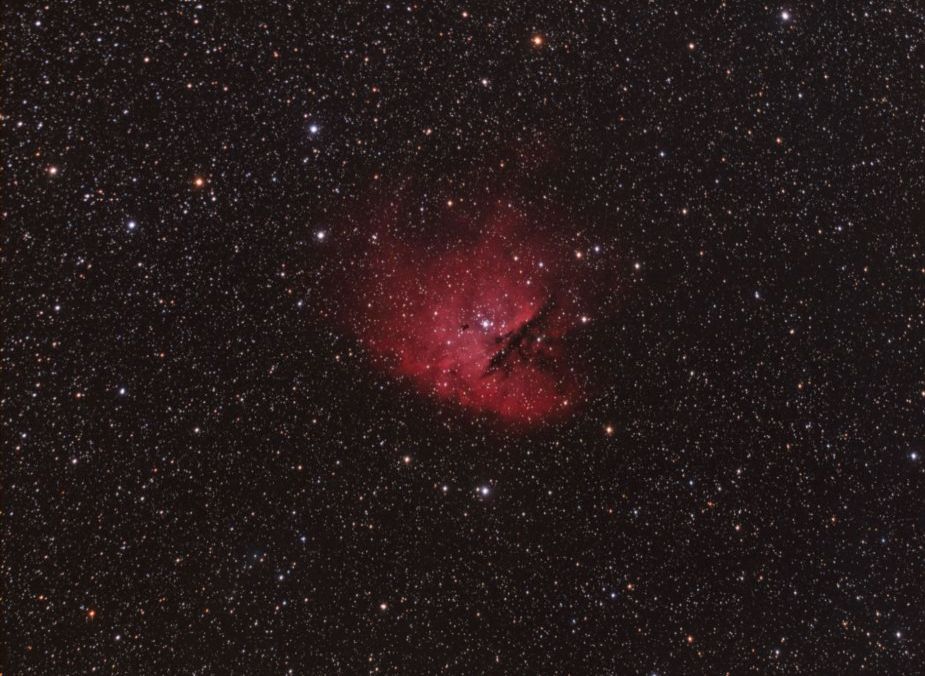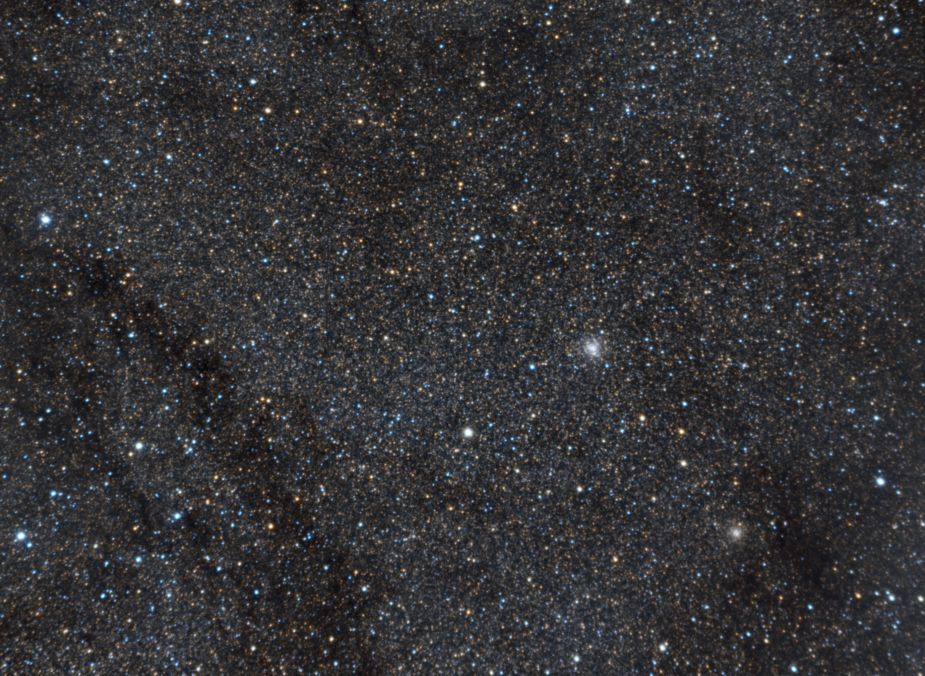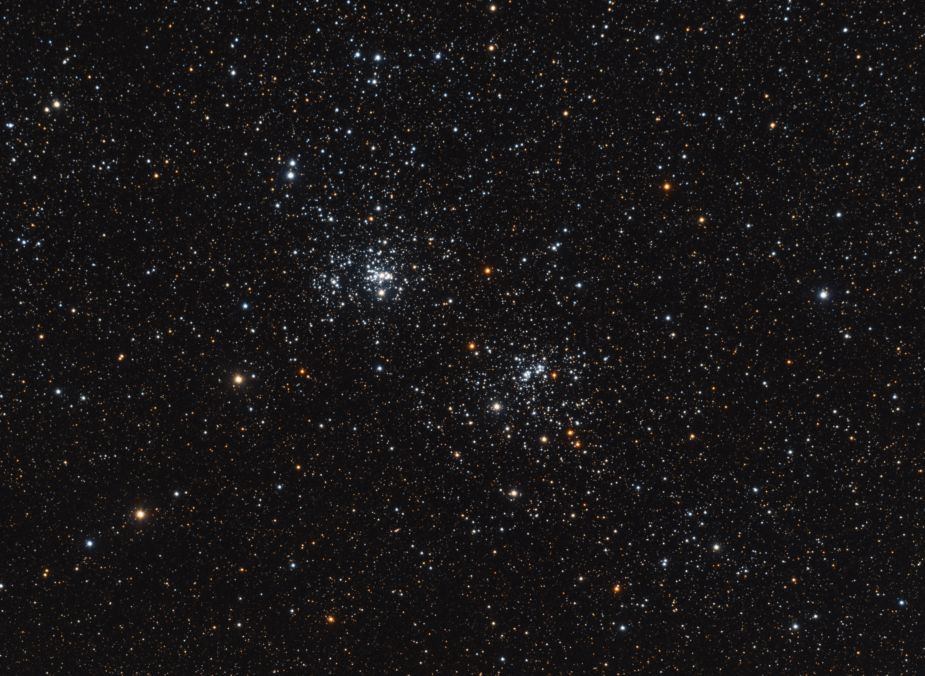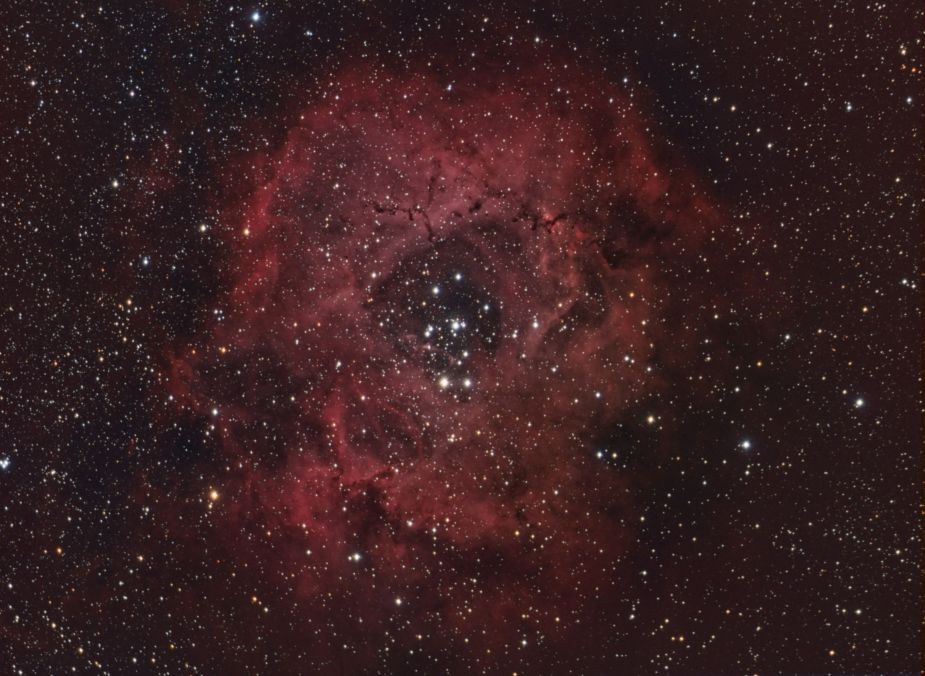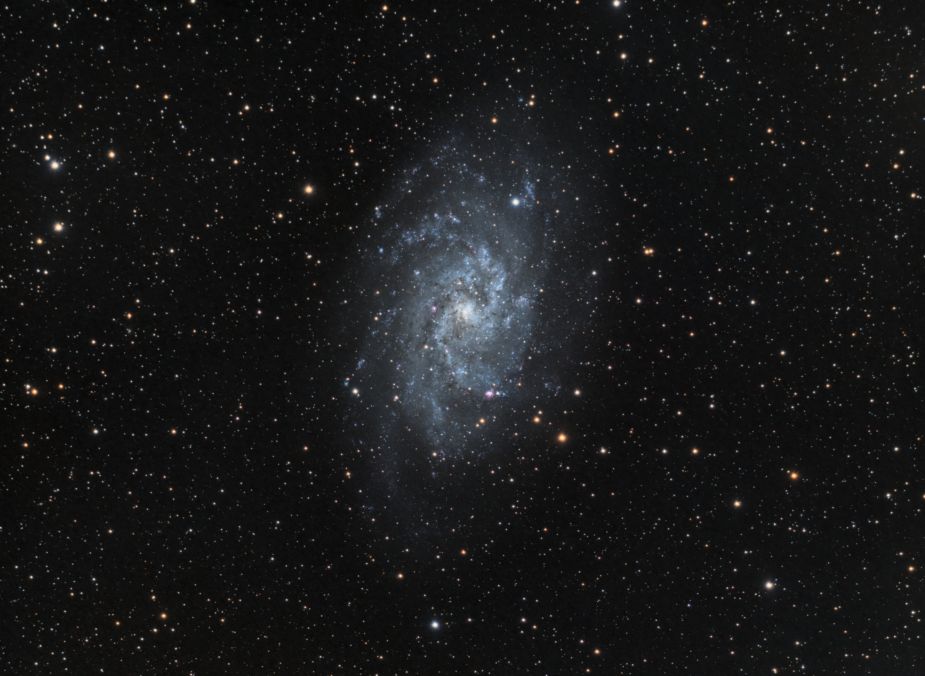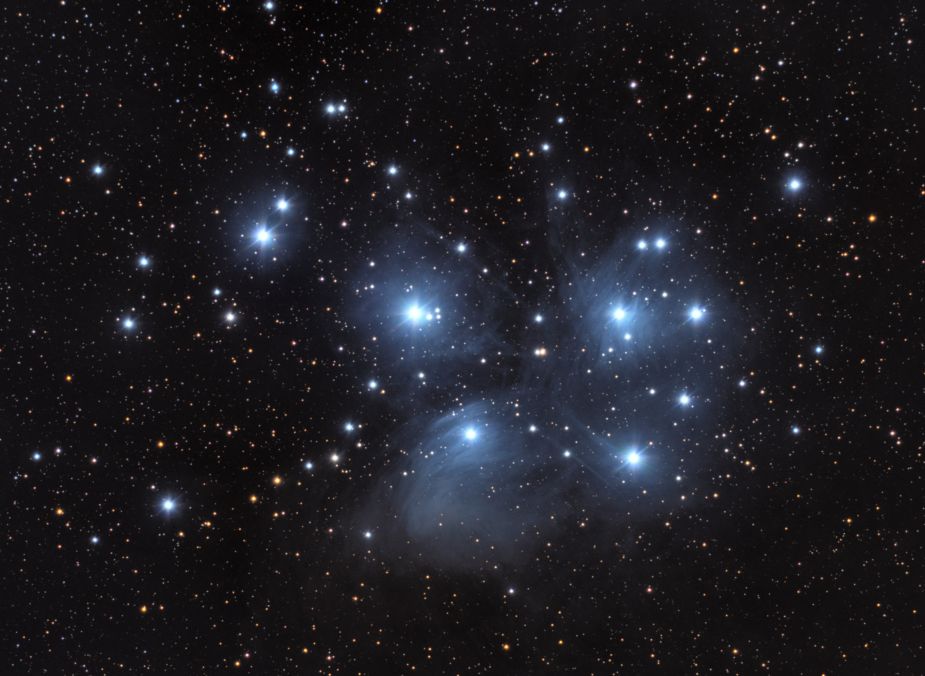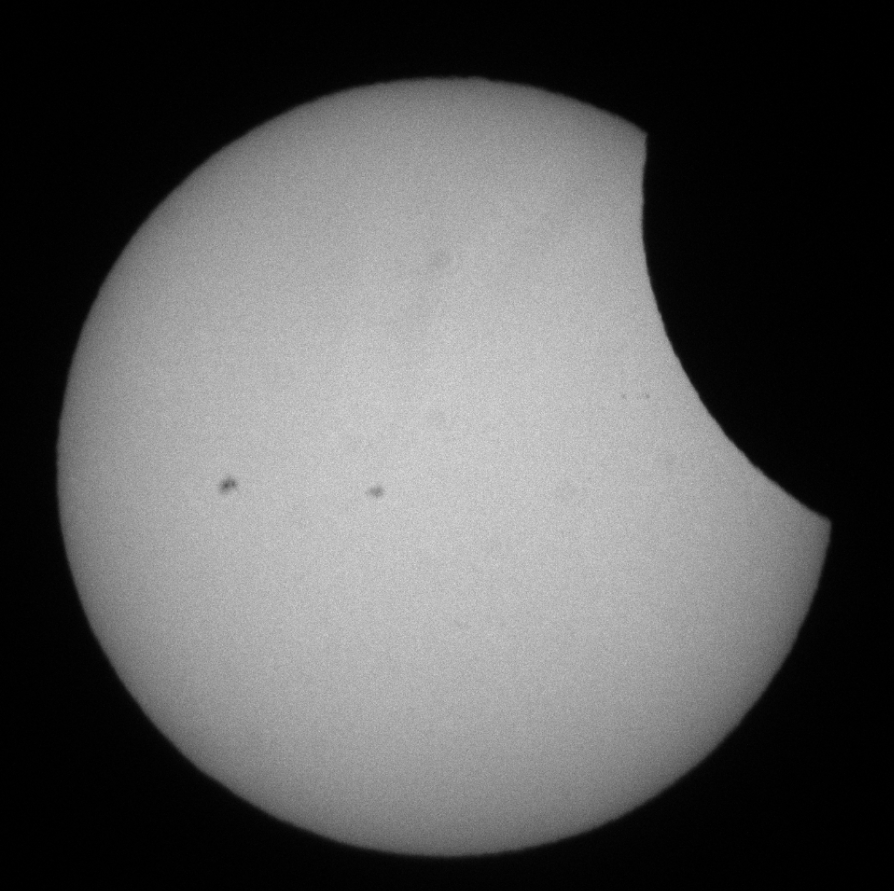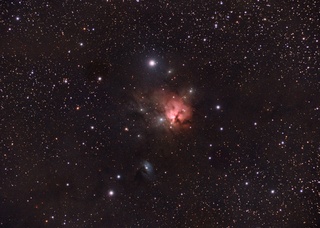
NGC 1579 (2023)
- Constellation: Perseus
- Right Ascension: 04h 30m 09.5s
- Declination: +35° 16′ 19″
- Distance: 2,100 ly
NGC 1579 is a nebula located in the constellation of Perseus. Often called the Northern Trifid because of its similarity to the Trifid nebula.
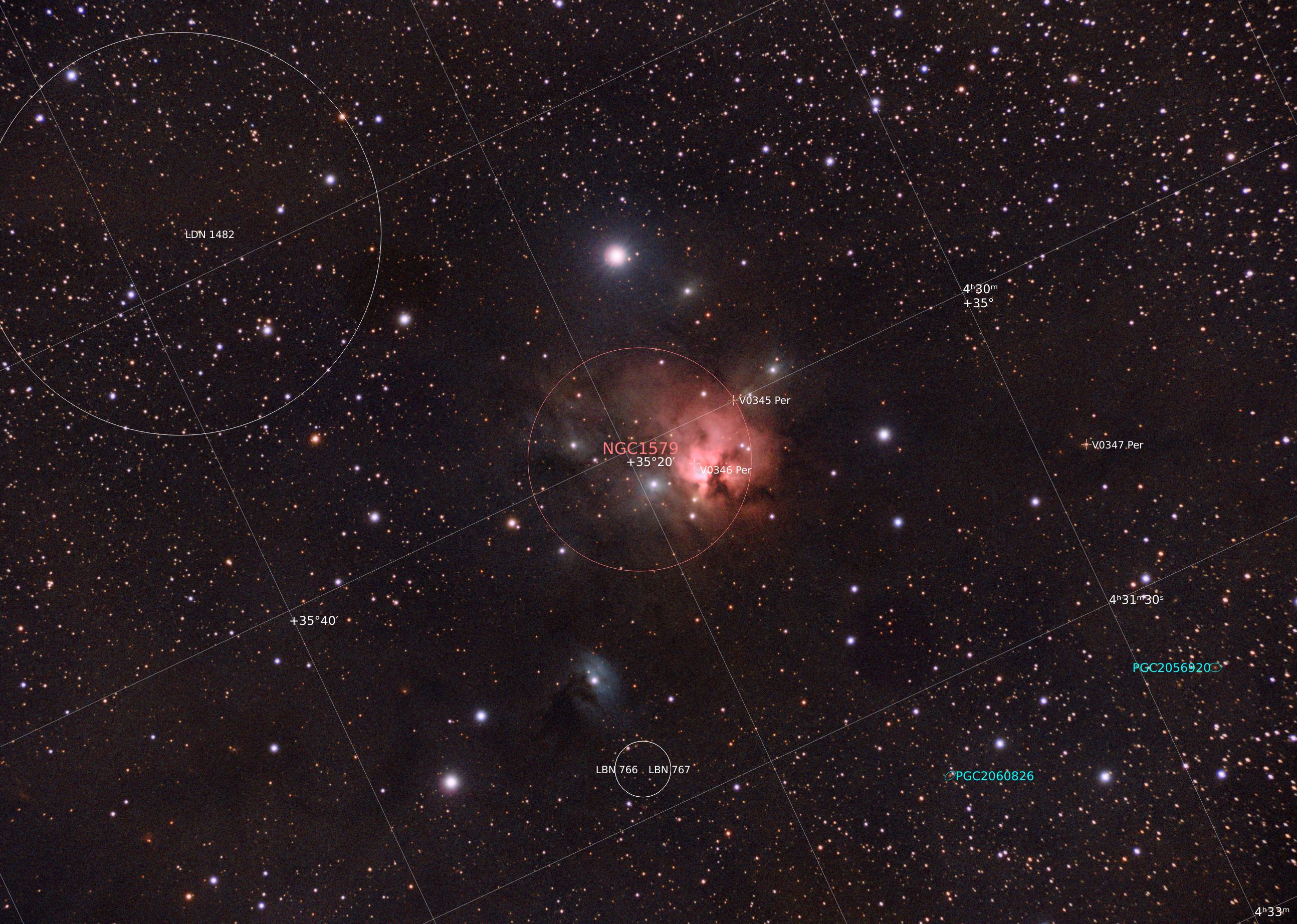
- Details
- Category: Nebulas
- Telescope: Explore Scientific 127 Refractor
- Camera: ZWO 2600 MM
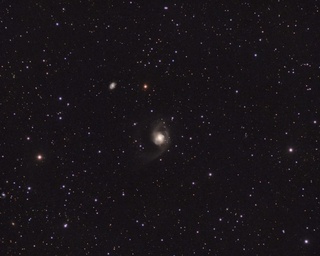
NGC 7727 (2023)
- Constellation: Aquarius
- Right Ascension: 23h 39.9m
- Declination: −12° 17′ 34″
- Distance: 76 million ly
- Galaxy Type: SAB(s)a pec
NGC 7727 is a galaxy located in the constellation of Aquarius. A perculiar galaxy that contains two nuclei, with several arms extending out. It is most likely the result of a merger of two galaxies.
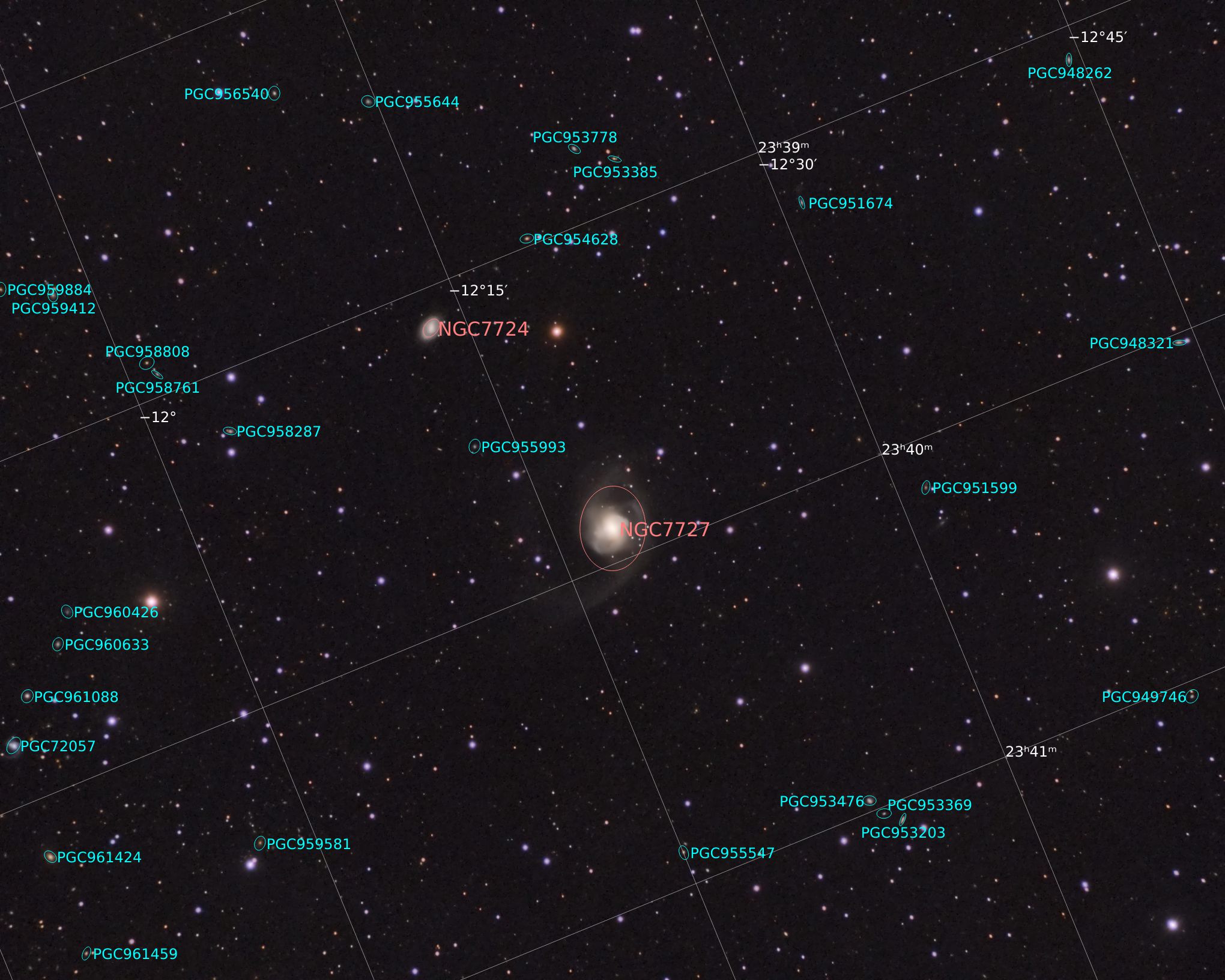
- Details
- Category: Galaxies
- Telescope: Explore Scientific 127 Refractor
- Camera: ZWO 2600 MM
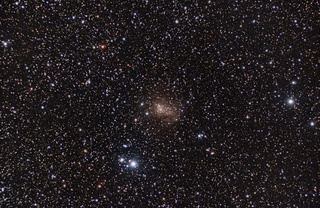
IC 10 (2023)
- Constellation: Cassiopeia
- Right Ascension: 00h 20m 17.3s
- Declination: +59° 18′ 14″
- Distance: 2.5 million ly
- Galaxy Type: dIrr IV/BCD
IC 10 is a irregular galaxy located in the constellation of Cassiopeia. Part of the local group of galaxies, but because of being located in the plane of the Milky Way galaxy it is obscured by dust and gas. It is also a star burst galaxy, being the only one in the local group.
- Details
- Category: Galaxies
- Telescope: Explore Scientific 127 Refractor
- Camera: ZWO 2600 MM
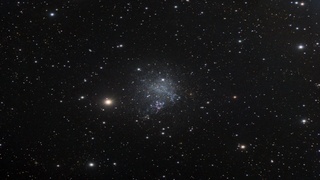
IC 1613 Galaxy (2023)
- Constellation: Cetus
- Right Ascension: 01h 04m 47.8s
- Declination: +02° 07′ 04″
- Distance: 2.38 million ly
- Galaxy Type: Ir V
IC 1613 is a irregular dwarf galaxy, part of the Local Group of galaxies that the Milky Way is part of. Notable for RR Lyrae type variable stars that can be observed, and can be used as a way to measure distance due to their periodic variability similar to Cepheid variable stars.
- Details
- Category: Galaxies
- Telescope: Explore Scientific 127 Refractor
- Camera: ZWO 2600 MM

- Telescope: EDT 80mm Reftactor
- Camera: ZWO 1600 MM
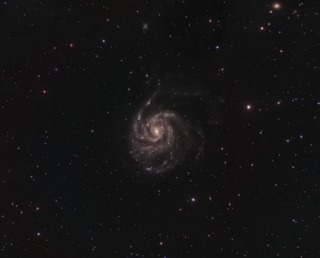
Messier 101 and SN 2023ixf
- Constellation: Ursa Major
- Right Ascension: 14h 03m 12.6s
- Declination: +54° 20′ 57″
- Distance: 20 million ly
Spiral galaxy M101 and its current supernova SN 2023ixf as of June 25th 2023. Currently around mag 11. Discovered by Koichi Itagaki of Japan. It was a Type II core collapse supernova.
- Details
- Category: Supernovas
- Telescope: Explore Scientific 127 Refractor
- Camera: ZWO 2600 MM
Page 3 of 4
